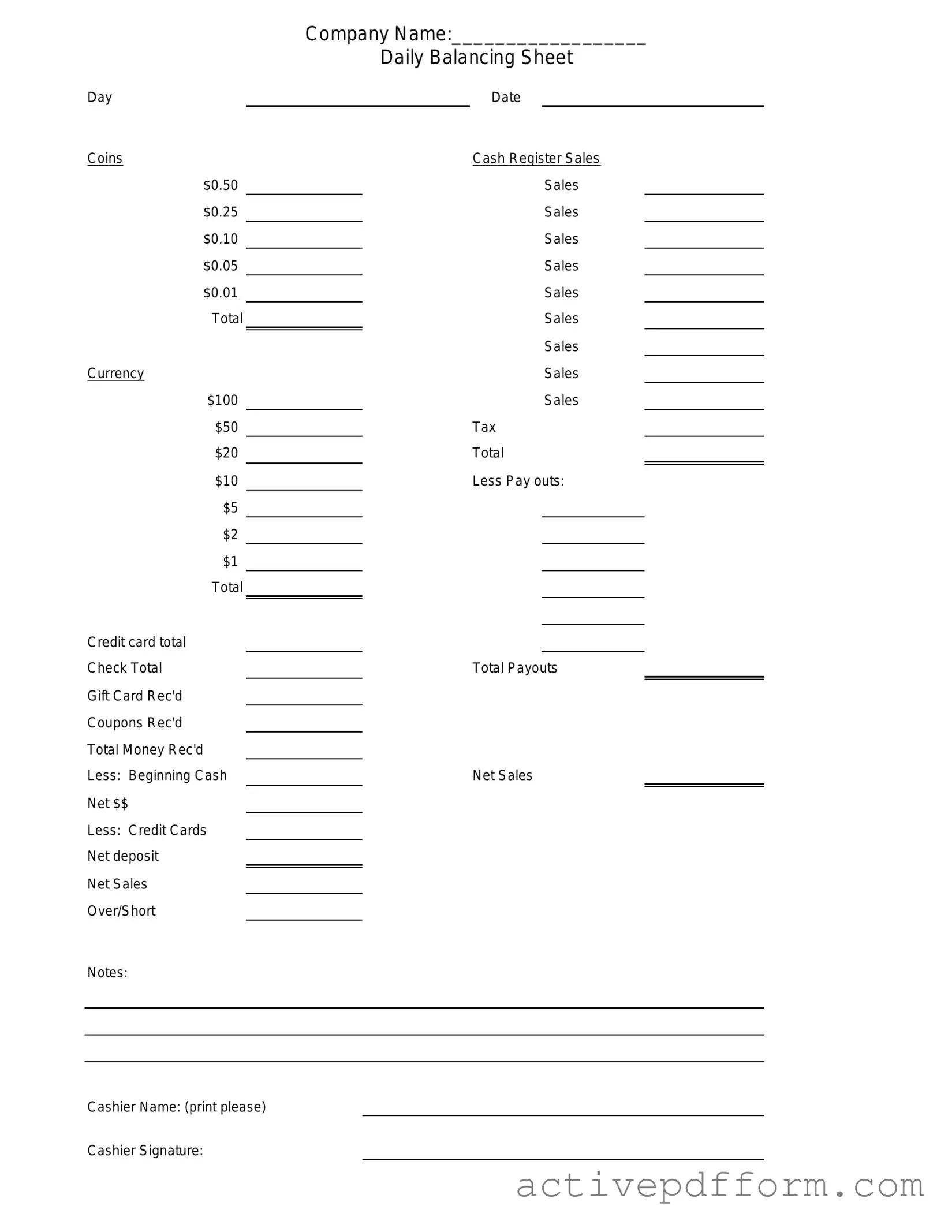What is a Cash Drawer Count Sheet?
A Cash Drawer Count Sheet is a tool used by businesses to track the cash in their registers. It helps ensure that the amount of cash on hand matches the sales recorded. This form is essential for maintaining accurate financial records and preventing discrepancies in cash management.
Why is it important to use a Cash Drawer Count Sheet?
Using a Cash Drawer Count Sheet is crucial for several reasons. First, it provides a clear record of cash transactions, helping to identify any potential errors or theft. Second, it aids in reconciling cash at the end of a shift or day, ensuring that the cash drawer is balanced. Finally, it serves as a valuable tool for financial audits and accountability within the business.
How often should I complete a Cash Drawer Count Sheet?
The frequency of completing a Cash Drawer Count Sheet can vary based on the business's needs. Many businesses choose to complete it at the end of each shift to ensure accuracy and accountability. Others may do so daily or weekly, depending on cash flow and transaction volume. Consistency is key, as it helps establish a routine for cash management.
What information should be included in a Cash Drawer Count Sheet?
A comprehensive Cash Drawer Count Sheet should include several key pieces of information. This typically includes the date, the cashier's name, the starting cash amount, total sales, cash received, cash paid out, and the ending cash amount. Additionally, it may include a breakdown of cash denominations, such as the number of $1, $5, $10, and $20 bills, as well as coins. This detailed record helps ensure accuracy during cash reconciliation.
What should I do if the cash count does not match the recorded sales?
If the cash count does not match the recorded sales, it is important to remain calm and systematic. First, double-check the count to ensure there were no mistakes in the cash handling. Review the sales records for any discrepancies, such as unrecorded transactions or errors in the cash drawer. If the mismatch persists, document the difference and report it to a supervisor or manager for further investigation. Taking these steps can help identify potential issues and prevent future occurrences.
Can the Cash Drawer Count Sheet be used for electronic payments?
Yes, the Cash Drawer Count Sheet can be adapted to include electronic payments. While the primary focus is on cash transactions, it is beneficial to track credit card, debit card, and other forms of payment as well. Including this information provides a more comprehensive view of the total sales and cash flow, ensuring that all financial transactions are accounted for during reconciliation.

